Related Research Articles

Ballarat is a city in the Central Highlands of Victoria, Australia. In 2018, Ballarat had a population of 105,471, making it the third-largest city in both Victoria and inland Australia.

Geelong is a port city located on Corio Bay and the Barwon River, in the state of Victoria, Australia. Geelong is 75 kilometres (47 mi) south-west of the state capital, Melbourne. It is the second largest Victorian city, with an estimated urban population of 268,277 as of June 2018. It is also Australia's second fastest growing city. Geelong runs from the plains of Lara in the north to the rolling hills of Waurn Ponds to the south, with Corio Bay to the east and the Barrabool Hills to the west. Geelong is the administrative centre for the City of Greater Geelong municipality, which covers urban, rural and coastal areas surrounding the city, including the Bellarine Peninsula.
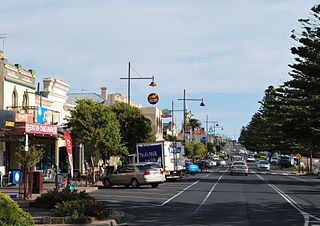
Portland is a city in Victoria, Australia, and is the oldest European settlement in the state. It is also the main urban centre in the Shire of Glenelg and is located on Portland Bay. In June 2018 the estimated population was 10,900, having decreased slowly at an average annual rate of −0.03% year-on-year over the preceding five years.

Bell Post Hill is a residential suburb of Geelong, Victoria, Australia. At the 2016 Census, Bell Post had a population of 4,919.

The Fitzroy Gardens are 26 hectares located on the southeastern edge of the Melbourne Central Business District in East Melbourne, Victoria, Australia. The gardens are bounded by Clarendon Street, Albert Street, Lansdowne Street, and Wellington Parade with the Treasury Gardens across Lansdowne street to the west.

Clunes is a town in Victoria, Australia, 36 kilometres north of Ballarat, in the Shire of Hepburn. At the 2016 census it had a population of 1,728.
Wathaurong, also called the Wathaurung,Wadawurrung and Wadda Wurrung, are an Aboriginal Australian people living in the area near Melbourne, Geelong and the Bellarine Peninsula in the state of Victoria. They are part of the Kulin alliance. The Wathaurung language was spoken by 25 clans south of the Werribee River and the Bellarine Peninsula to Streatham. They were sometimes referred to by Europeans as the Barrabool people. The area they inhabit has been occupied for at least the last 25,000 years, with 140 archaeological sites having been found in the region, indicating significant activity over that period.
VicRoads or the Roads Corporation of Victoria is a statutory corporation in the state of Victoria, Australia. In the state, it is responsible for driver licensing and vehicle registration, and regulating the accident towing industry in Victoria. It is part of the Department of Transport.
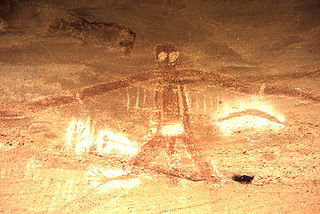
An Australian Aboriginal sacred site is a place deemed significant and meaningful by Aboriginal Australians based on their beliefs. It may include any feature in the landscape, and in coastal areas, these may lie underwater. The site's status is derived from an association with some aspect of social and cultural tradition, which is related to ancestral beings, collectively known as Dreamtime, who created both physical and social aspects of the world. The site may have its access restricted based on gender, clan or other Aboriginal grouping, or other factors.
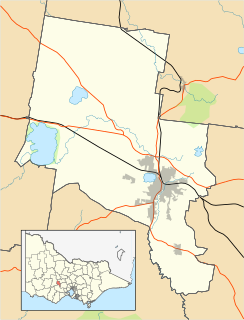
Bakery Hill is an inner city suburb of Ballarat in Victoria, Australia. It is the smallest suburb in the city of Ballarat in terms of both area and population, which at the 2016 census was just 164 people. The area is a mix of residential and commercial, as it has been since it came into existence at the beginning of the gold rush. In the present time it is mainly known for its restaurants and pubs, as well as fast food. The suburb boundaries are that of Mair, East, Barkly, Steinfield and Peel Streets.

The Yarrowee River is a perennial river of the Corangamite catchment, located in the Central Highlands region of the Australian state of Victoria.

Wurdi Youang is the name attributed to an Aboriginal stone arrangement located off the Little River – Ripley Road at Mount Rothwell, near Little River, Victoria in Australia. The site was acquired by the Indigenous Land Corporation on 14 January 2000 and transferred to the Wathaurong Aboriginal Co-operative on 17 August 2006.
Ian D. Clark is an academic historian and Toponymist whose primary work has focused on Victorian Aboriginal history, aboriginal toponymy and the frontier conflict between Indigenous Australians and immigrant settlers during the European settlement of Victoria, Australia.
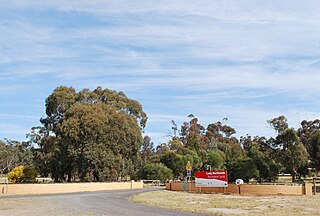
The Northcote Farm School (NFS) was a farm school built at Glenmore, near Bacchus Marsh, Victoria, in 1937.
Bonnie Fagan, now known as Bonnie Chew, is an activist and advocate for her Indigenous heritage, and has sat on the Victorian Aboriginal Heritage Council.
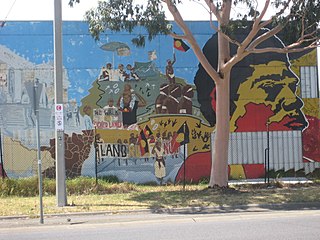
A Registered Aboriginal Party (RAP) is a recognised representative body of an Aboriginal Australian people per the Aboriginal Heritage Act 2006. These bodies act as the "primary guardians, keepers and knowledge holders of Aboriginal cultural heritage". They protect and manage the Aboriginal cultural heritage in Victoria, Australia.
The Wathaurong Aboriginal Co-operative is a community organisation based in Geelong, Australia that supports the social, economic, and cultural development of Aboriginal people within the Geelong and surrounding areas. It was formed in 1978 and registered in 1980.
The Kurung were identified as an indigenous Australian group of the State of Victoria by Norman Tindale. The theory that they constituted an independent tribe has been challenged with modern scholarship generally considering them as a clan, associated to one of two major tribes. Their language is unconfirmed.

Budj Bim heritage areas include the Budj Bim National Heritage Landscape, which was added to the National Heritage List on 20 July 2004, and the Budj Bim Cultural Landscape, which was designated a UNESCO World Heritage Site on 6 July 2019. Within the Budj Bim Cultural Landscape, there are three Indigenous Protected Areas: the Tyrendarra Indigenous Protected Area, Kurtonitj Indigenous Protected Area (2009) and the Lake Condah Indigenous Protected Area (2010).
Lake Condah Mission, also known as Condah Mission, was established in 1867 as a Church of England mission, approximately 3 kilometres (1.9 mi) from Lake Condah, which was traditionally known as Tae Rak, and about 20 kilometres (12 mi) to 25 kilometres (16 mi) south-east of the small town of Condah. The site of the mission, on 2,000 acres (810 ha) north of Darlot Creek, was formally reserved in 1869, and the Mission continued operations until the reserve was finally revoked in 1951, with most of the land handed over to the Soldiers Settlement Scheme to provide land for white veterans of World War II.
References
- 1 2 "Wathaurung Aboriginal Corporation". Victoria State Government, Department of Premier and Cabinet. Retrieved 10 December 2013.
- ↑ "Wathaurung Aboriginal Corporation". Australian Telephone Directory. Archived from the original on 13 December 2013. Retrieved 10 December 2013.
- ↑ 'Indigenous land decision sparks legal threat', ABC News 8 Jul 2009, 6:54am
- ↑ "League of Historical Cities". Ballarat.vic.gov.au. 18 April 2012. Archived from the original on 12 December 2013. Retrieved 10 December 2013.
- ↑ Lily Partland (10 July 2013). "Wathaurung use technology to take control of their cultural heritage". ABC Ballarat. Retrieved 10 December 2013.